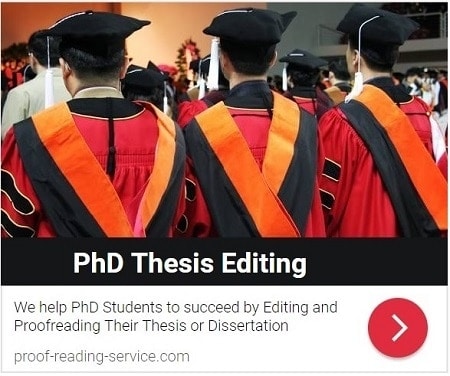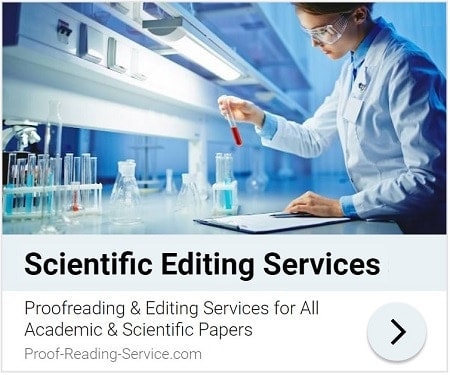
Table of Contents (Guide To Publication)
Part III: Communicating with Journal Editors: Submission, Acceptance, Revision and Rejection – Chapter 6
6.2.2 Summing It All Up: The Abstract
While covering letters are required less often with today’s online submission procedures than they once were, the need for an abstract when submitting an academic or scientific article is more common, even in disciplines that once would not have used such an initial summary of the paper to follow. So in most cases it’s best to plan on including an abstract from the beginning, regardless of your subject and field, and to recognise that a good abstract, like a good covering letter or a good introduction, requires a lot of consideration and you will likely need to return to it and make adjustments a few times before it’s finished. It’s useful to draft your abstract early in the writing process, as it can help you focus on the essential elements of your research and results as you work on your paper, but your abstract will certainly need to be edited and rewritten once your paper is finished, and probably again after you’ve had a colleague or other qualified reader look it over for you, which is highly recommended in the case of an abstract. As with your title, it’s virtually impossible to put too much time and effort into improving and polishing your abstract because it is often amidst the abstract that an editor is either won or lost, and the situation is similar after publication, when readers often decide whether to read your entire paper or not on the basis of the abstract they find through an online (or other kind of) search. So the abstract of a paper can be the most important part of an article, for good or ill.
An academic or scientific abstract should summarise the contents of the paper it precedes briefly and comprehensively. It should not contain information that isn’t present in the paper and it should report, not evaluate, what can be found in the paper. Like the title, the abstract needs to be precise, concise and as engaging as possible, but it also needs to be densely packed with information. Word limits for abstracts set by journals usually range between 100 and 300 words, with 150-250 the most common length, and those limits should be strictly observed despite how much must be accomplished in that short space. A carefully prepared abstract will situate your research in both its physical and intellectual contexts; it will inform the reader about the problem(s) or concept(s) you’re investigating, any participants in your study and the essential features of the methodology used; and it will report the basic findings, implications and conclusions of your study. Each abstract will therefore also be unique, so exactly what should or should not be included in an abstract varies from author to author and paper to paper.
Some style manuals and journal guidelines will provide detailed instructions on the kind of information that should be included in your abstract. The APA Manual, for example, gives sound practical advice as well as outlining the expectations of abstracts for a variety of different kinds of paper such as empirical studies, literature reviews, theory-oriented papers and case studies. An APA abstract is a single paragraph, but in many journal guidelines detailed advice on the content of abstracts will come in the form of instructions for a structured abstract – that is, an abstract divided into short sections or paragraphs, usually with individual headings such as Background, Methods, Participants, Results, Conclusion and the like, often in bold or italic font. The headings can differ from journal to journal and also according to the type of paper, so be sure to check the guidelines carefully and to identify correctly what type of paper you’ve written before finalising the structure and layout of your abstract. Some journals will even specify the length of each section of the abstract, but in most cases the balance of information will be yours to determine, and even in a completely structured abstract you will need to decide which concepts, methods and results to include. This decision should be based not just on what you think most important about your research and the article it’s generated but also what you think the journal editor will find most appropriate and engaging for his or her readers.
It is crucial, of course, that your abstract is well written in grammatically correct, properly punctuated and complete English sentences. Every sentence should bear the maximum amount of information and meaning possible, with minimal use of minor words, and each main word should be chosen with great care, primarily for its denotations, of course, but also for its potential connotations: it should be precise and informative, and if it manages to nuance matters in a way that seems appropriate to your results and the journal’s interests, that’s a good thing, too. Your first sentence in particular is crucial to gaining the interest and confidence of your reader: it needs to be polished to perfection in both content and style so that it reads smoothly and clearly communicates important points about your work. As a general rule, avoid references in an abstract unless essential; use abbreviations only if they’re absolutely necessary (and not at all if the guidelines prevent it) and clearly define each one (other than those for common measures) that you do have to use; and beware of too much specialised terminology and jargon – some will perhaps be necessary to explain your methods and results, but while you want your readers to know that you’re aware of the correct terms and how to use them, you don’t want to confuse or lose readers who are, necessarily, not yet familiar with the content of your paper. What you do want is for them, and especially that all-important editor, to read on, so everything about your abstract should encourage that possibility.
PRS Tip: Abstracts can often require a lot of attention during and after proofreading, especially if you’re not a native speaker of English and find yourself struggling to condense the contents of your paper into carefully structured sentences that express your ideas with precision. If you have to rewrite your abstract to a significant degree after having your paper read by a PRS proofreader (or any other careful, critical reader), you may want to send it back for a second read. You can always send just the abstract and/or any other particularly problematic part of your paper, and request the same proofreader to double-check your revisions or a different one if you’d like a second opinion. It’s a good way to reduce the cost of final proofreading while buying peace of mind before submitting your work.
This article is part of a book called Guide to Academic and Scientific Publication: How To Get Your Writing Published in Scholarly Journals. It provides practical advice on planning, preparing and submitting articles for publication in scholarly journals.
Whether you are looking for information on designing an academic or scientific article, constructing a scholarly argument, targeting the right journal, following journal guidelines with precision, providing accurate and complete references, writing correct and elegant scholarly English, communicating with journal editors or revising your paper in light of that communication, you will find guidance, tips and examples in this manual.
This book is focusing on sound scholarly principles and practices as well as the expectations and requirements of academic and scientific journals, this guide is suitable for use in a wide variety of disciplines, including Economics, Engineering, the Humanities, Law, Management, Mathematics, Medicine and the Social, Physical and Biological Sciences .






